AP Art History Unit 9- Pacific
1/26
There's no tags or description
Looks like no tags are added yet.
Name | Mastery | Learn | Test | Matching | Spaced |
|---|
No study sessions yet.
27 Terms
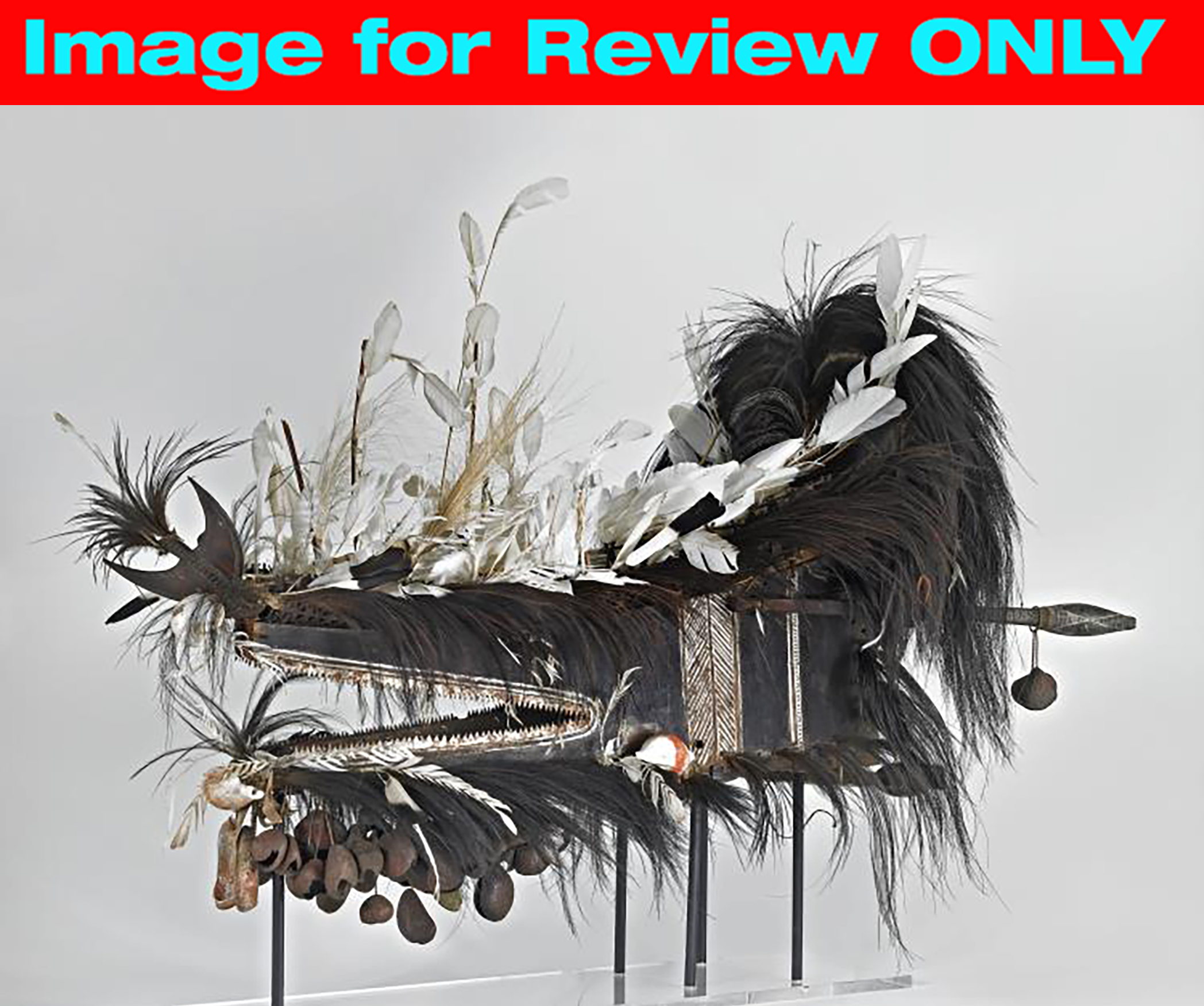
In the work shown, textural accents such as coconut fiber, feathers, and seashells are attached to the mask’s base in such a way as to
A foster the mask’s impermanence
B enhance the strength of the turtle-shell base
C ensure the mask’s longevity
D facilitate the movement of the accent materials
D facilitate the movement of the accent materials
The symmetric design and use of vibrantly colored feathers in the ‘ahu ‘ula shown were designed to
A provide camouflage for the ruler on journeys through the rain forest
B represent the balance of the elemental forces of life and death
C reflect a balance in the relationship between the ruler and the community
D highlight materials that embodied the divine power of the ruler
D highlight materials that embodied the divine power of the ruler
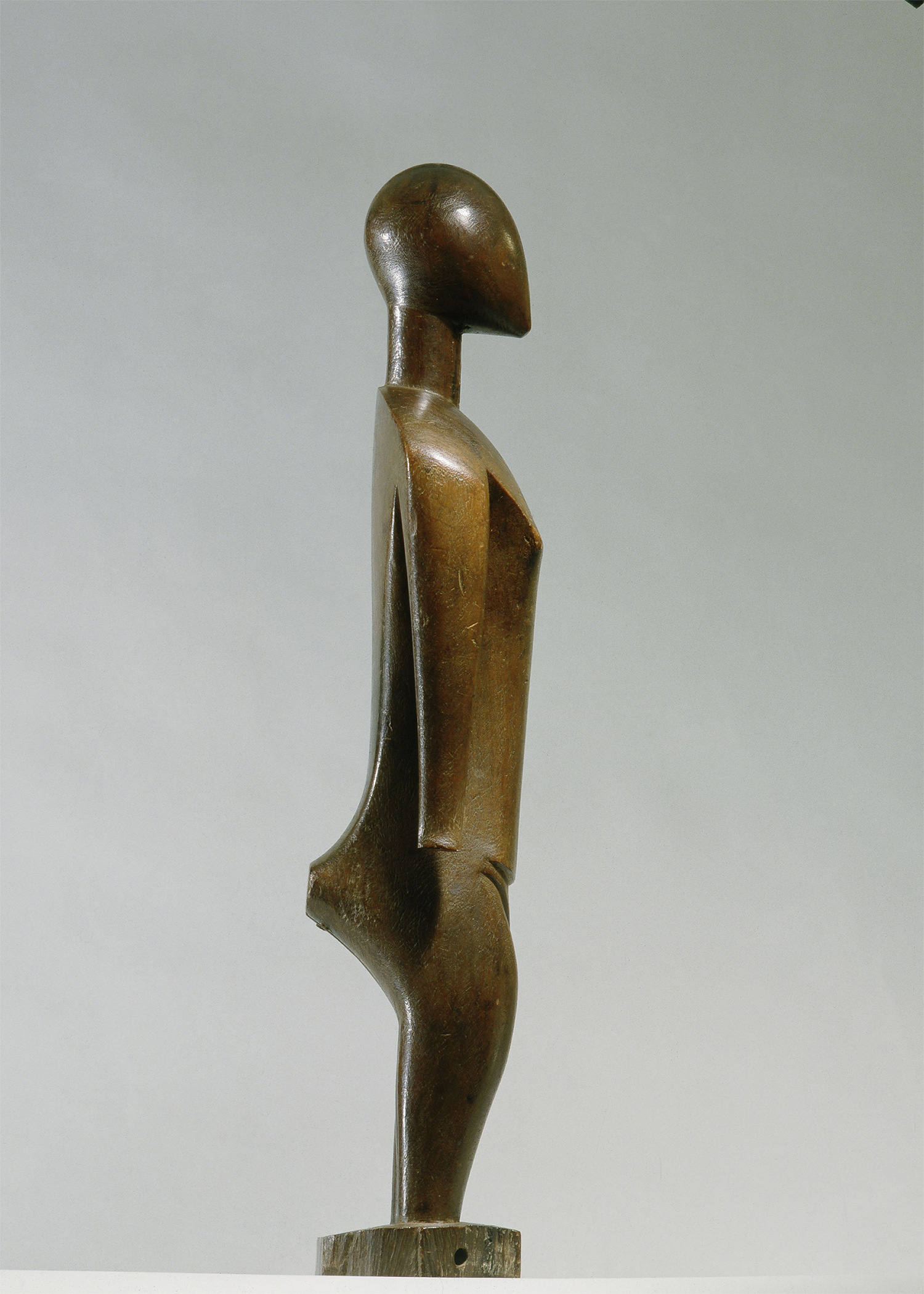
The form of the figural work shown, from Nukuoro in Micronesia, can best be described as
A aniconic
B veristic
C stylized
D naturalistic
C stylized
Nukuoro figures of Micronesia were made as abstract figures with smooth wood in order for them to
A represent the inner essence of the most powerful creator god
B embody local deities and be honored with feathers, paint, and woven fiber decoration
C depict guardians that protected agricultural crops during the growing season
D portray young adults who have recently completed initiation ceremonies
B embody local deities and be honored with feathers, paint, and woven fiber decoration
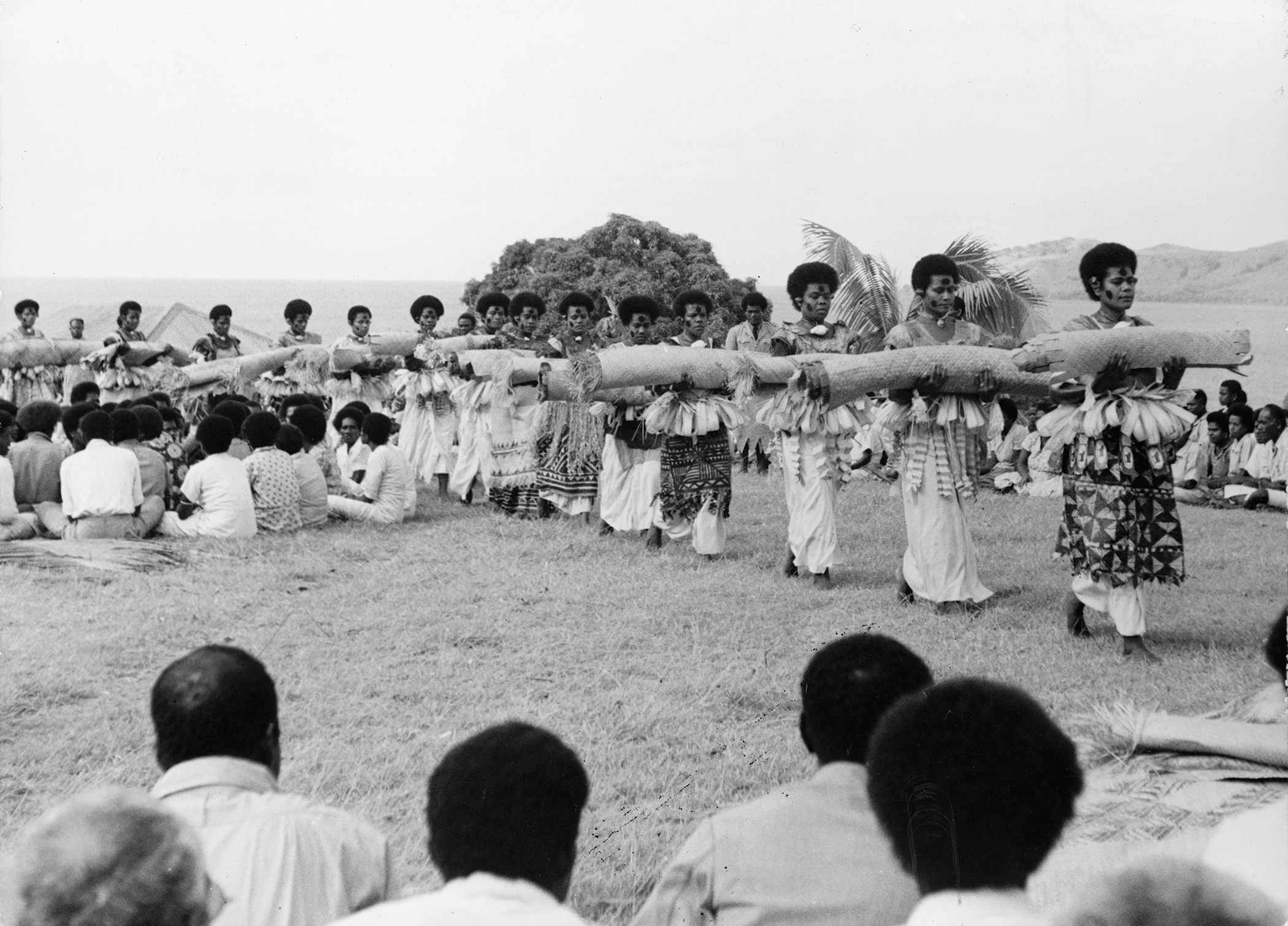
The importance of the ceremony seen in the photograph was reinforced by the presentation of
A wooden sculptures wrapped in wool textiles
B tapa cloth and woven mats
C capes made with feathers and fiber
D embroidered textiles and animal hides
B tapa cloth and woven mats
The purpose of the photograph depicting the welcoming processional for Queen Elizabeth II is to
A record a ritual celebrating renewed trade agreements
B allow the international press access to secret religious ceremonies
C show the establishment of the first democratic elections
D document a complex and prescribed cultural exchange
D document a complex and prescribed cultural exchange
How did Gottfried Lindauer’s artistic decisions shape his portrait of Tamati Waka Nene?
A He added traditional Maori clothing and regalia in order to emphasize his subject’s cultural heritage.
B He painted his subject, based on observation, engaged in a traditional activity in order to document Maori daily life.
C He used traditional Maori techniques for the portrayal of his subject in order to document Maori artistic traditions.
D He included a detailed depiction of landscape in the background in order to communicate a patriotic message.
A He added traditional Maori clothing and regalia in order to emphasize his subject’s cultural heritage.
To create the portrait of Tamati Waka Nene, Gottfried Lindauer used the technique of
A drypoint and aquatint
B polychrome woodblock print
C oil painting on canvas
D freehand painting on tapa
C oil painting on canvas
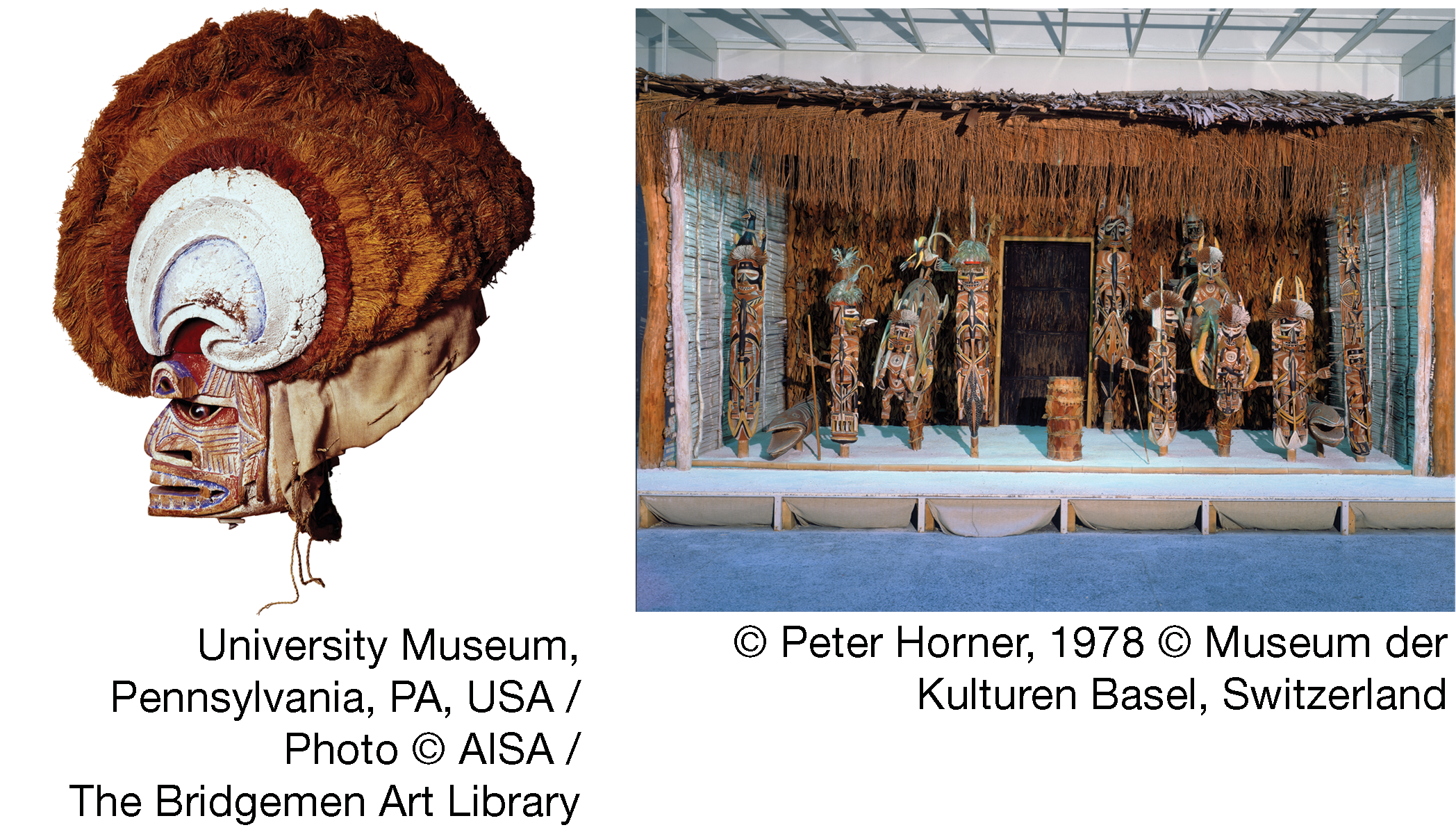
Malagan displays like the one shown, containing elaborately carved and painted figures, poles, and friezes, were usually intended to
A be used as a stage for a new king during royal coronation ceremonies
B serve as a ceremonial space for the reception of foreign dignitaries
C serve as a temporary altar space during an annual harvest ritual
D be revealed at the height of commemorative ceremonies honoring the dead
D be revealed at the height of commemorative ceremonies honoring the dead
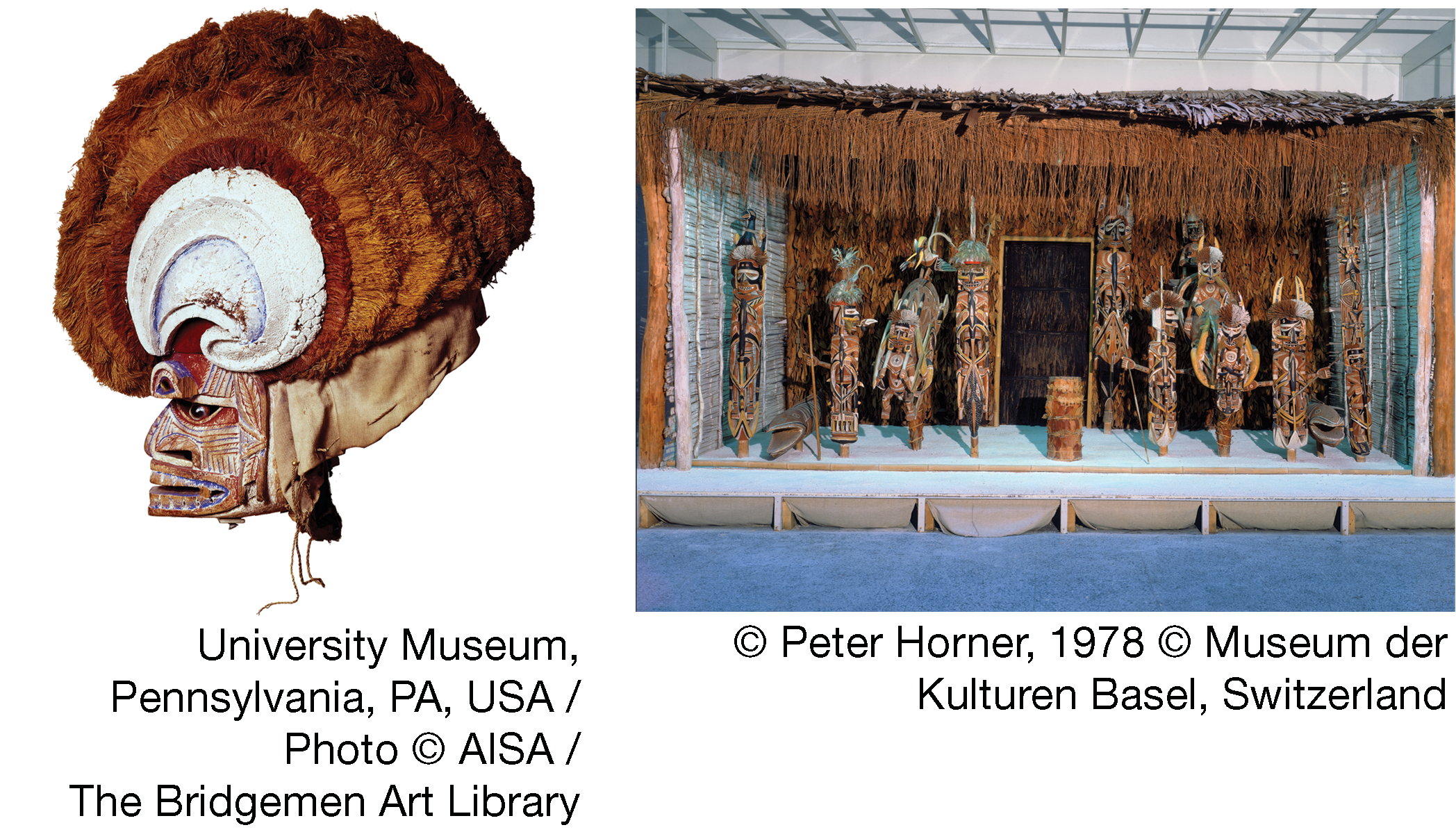
The specific combination of motifs and style used in each Malagan object is partially determined by
A customary laws that transferred the ownership of each object’s design to its individual patron
B rules enforced by Australian governors which regulated the production of Malagan objects
C rules that prescribed the usage of certain colors and patterns based on the patron’s social status
D customs that restricted the artist to the use of traditional designs that were specific to his family
A customary laws that transferred the ownership of each object’s design to its individual patron
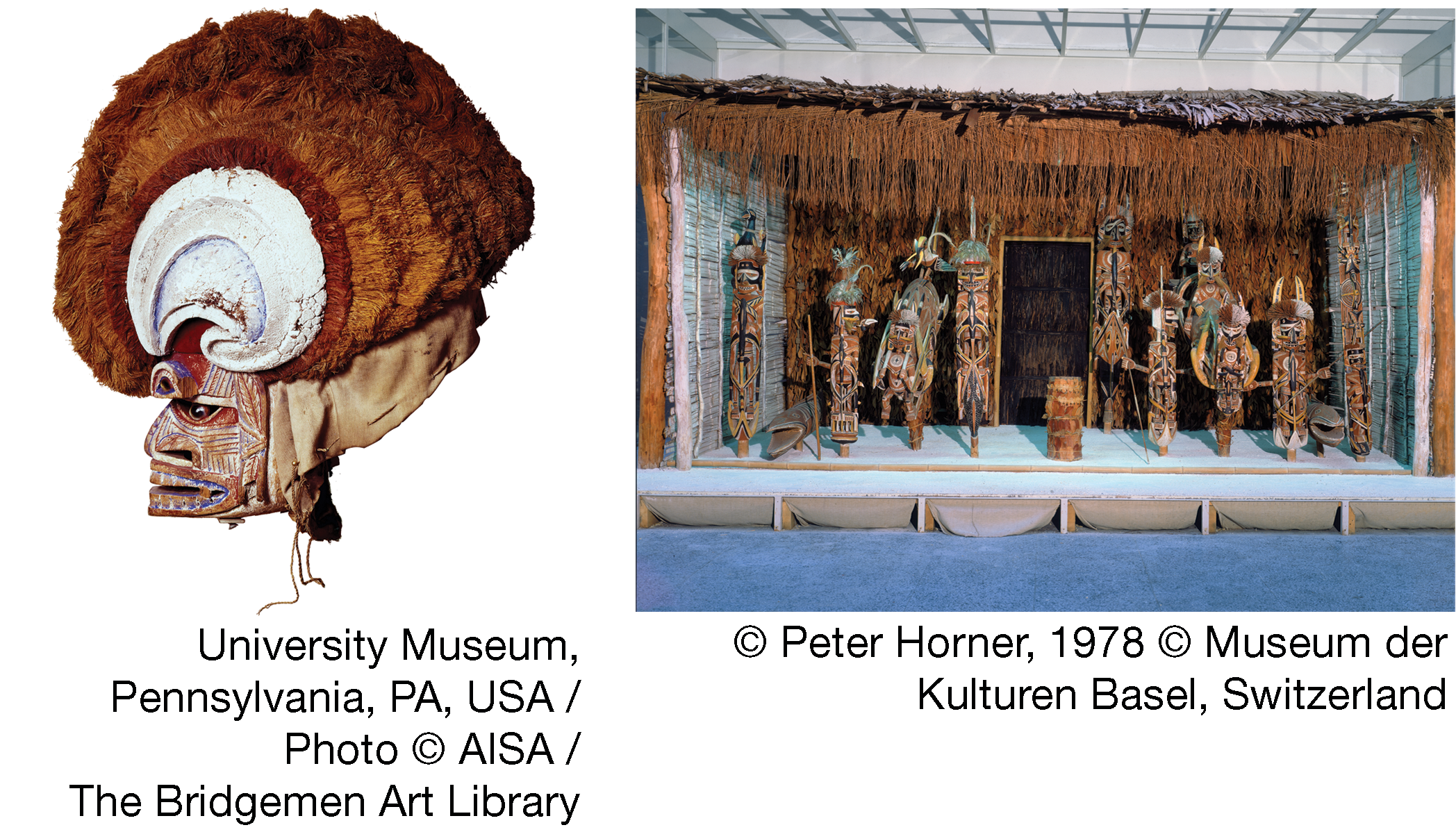
The customary destruction of Malagan display objects after their use has been interpreted as
A representing the ritual sacrifice of the objects as an offering to the gods
B constituting the transfer of the objects into the realm of ancestral spirits
C demonstrating that the objects have ceased to serve their spiritual function
D symbolizing the destruction of negative forces that who might threaten the community
C demonstrating that the objects have ceased to serve their spiritual function
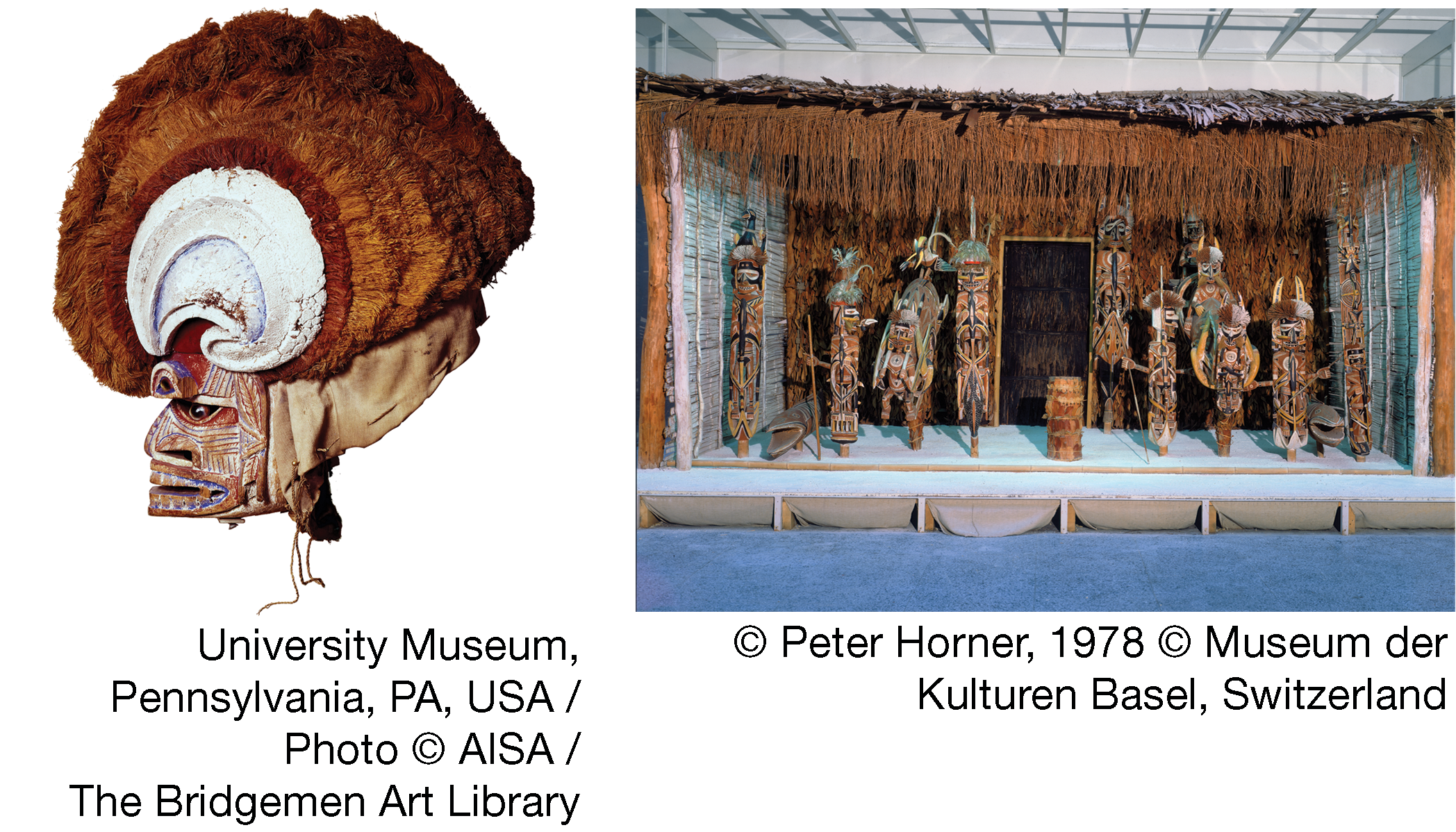
Malagan masks represent
A portraits depicting individual characteristics of the wearer
B spiritual beings associated with the protection of the community
C the varying social ranks of the women who wear them
D an agricultural deity responsible for taro crops
B spiritual beings associated with the protection of the community
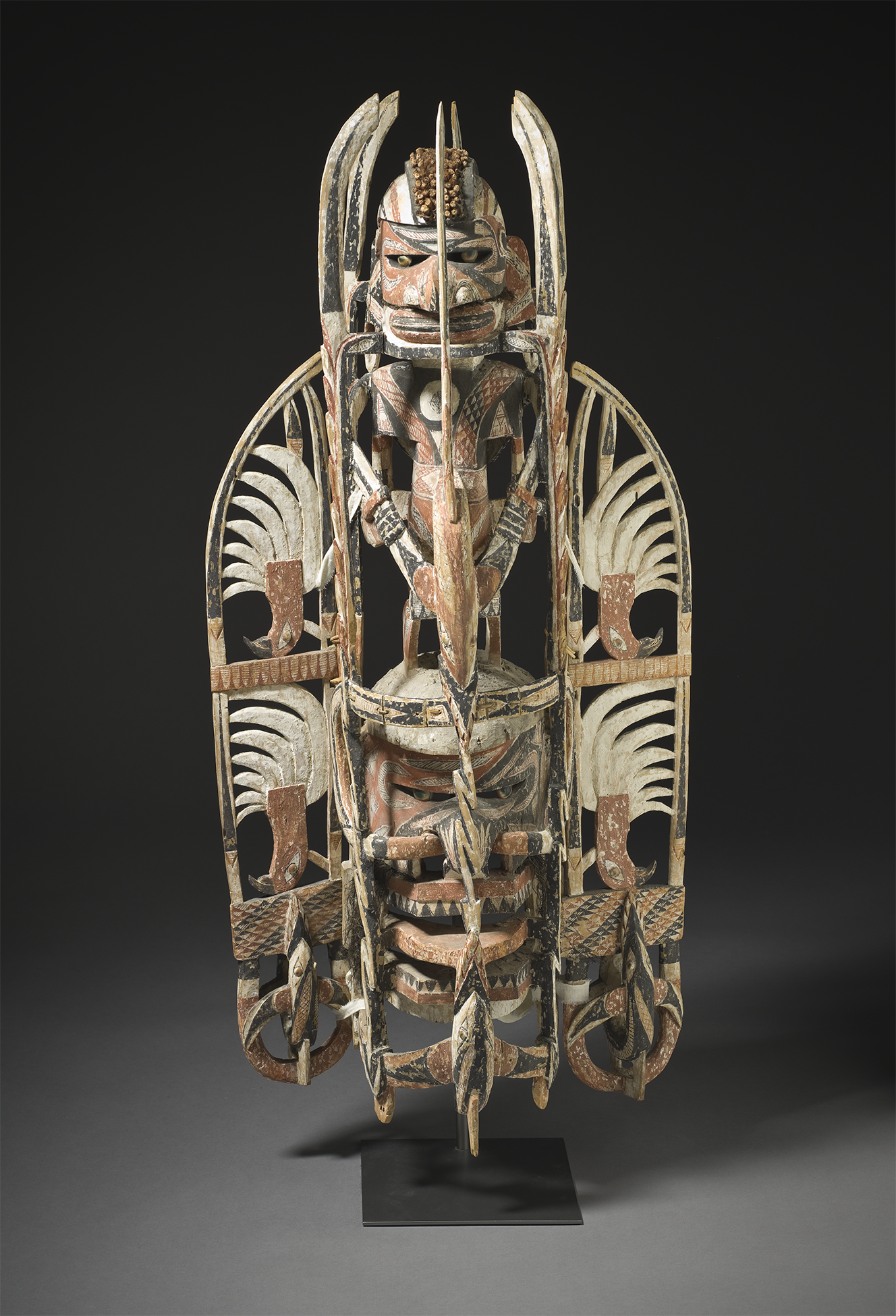
In the malagan mask shown, the artist organized the composition to convey a sense of formal balance by
A adding a variety of textural accents to the smooth wooden form
B positioning motifs asymmetrically to enhance the uniqueness of the surface patterns
C carving similar elements on either side of a centrally placed vertical axis
D building in additional features to customize the standard mass-produced base
C carving similar elements on either side of a centrally placed vertical axis
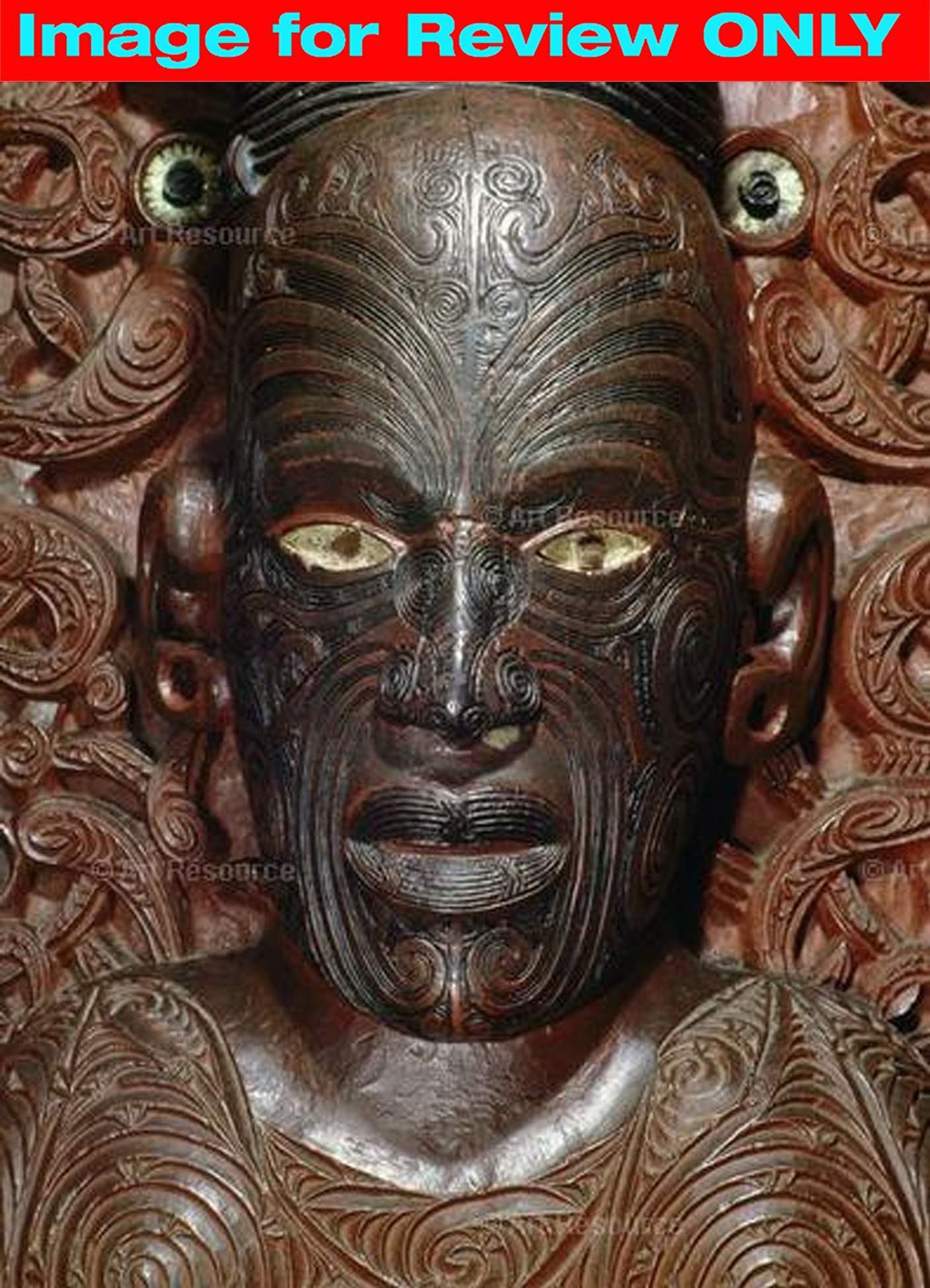
In the sculpture’s face shown, the surface treatment is best described as
A relief-carved energy lines that are composed using radial balance
B molded brass outer layer treated with seawater to form a bronze patina
C incised symmetrical patterns that reflect Maori moko tattoo design
D sanded, asymmetrical embellishment inspired by ceremonial masks
C incised symmetrical patterns that reflect Maori moko tattoo design
The monumental size and figural content of the moai on platform (ahu) from Rapa Nui strongly suggest to scholars that the culture that created them can best be described as
A hierarchical
B matrilineal
C egalitarian
D nomadic
A hierarchical
Scholars theorize the moai on platform (ahu) had a protective function based on their upward-tilted gaze and the
A use of marble quarried from a sacred mountain
B placement of the figures with their backs to the ocean
C representation of detailed portraits of individual rulers
D orientation facing outward toward neighboring islands
B placement of the figures with their backs to the ocean
The structures that comprise the ancient site of Nan Madol were built by
A binding layers of irregularly shaped boulders together with mortar
B stacking natural basalt columns in an intersecting pattern
C arranging precisely cut stone blocks into a seamless masonry wall
D using a type of concrete made from local sand and volcanic ash
B stacking natural basalt columns in an intersecting pattern
Archaeologists have theorized that Nan Madol was a significant ceremonial center based on its extensive network of basalt structures and
A evidence of long-distance trade, including caches of jade and gold
B the excavation of expansive marble quarries
C the remains of large amounts of adornments, food, and kava
D reconstructed floating wooden temples
C the remains of large amounts of adornments, food, and kava
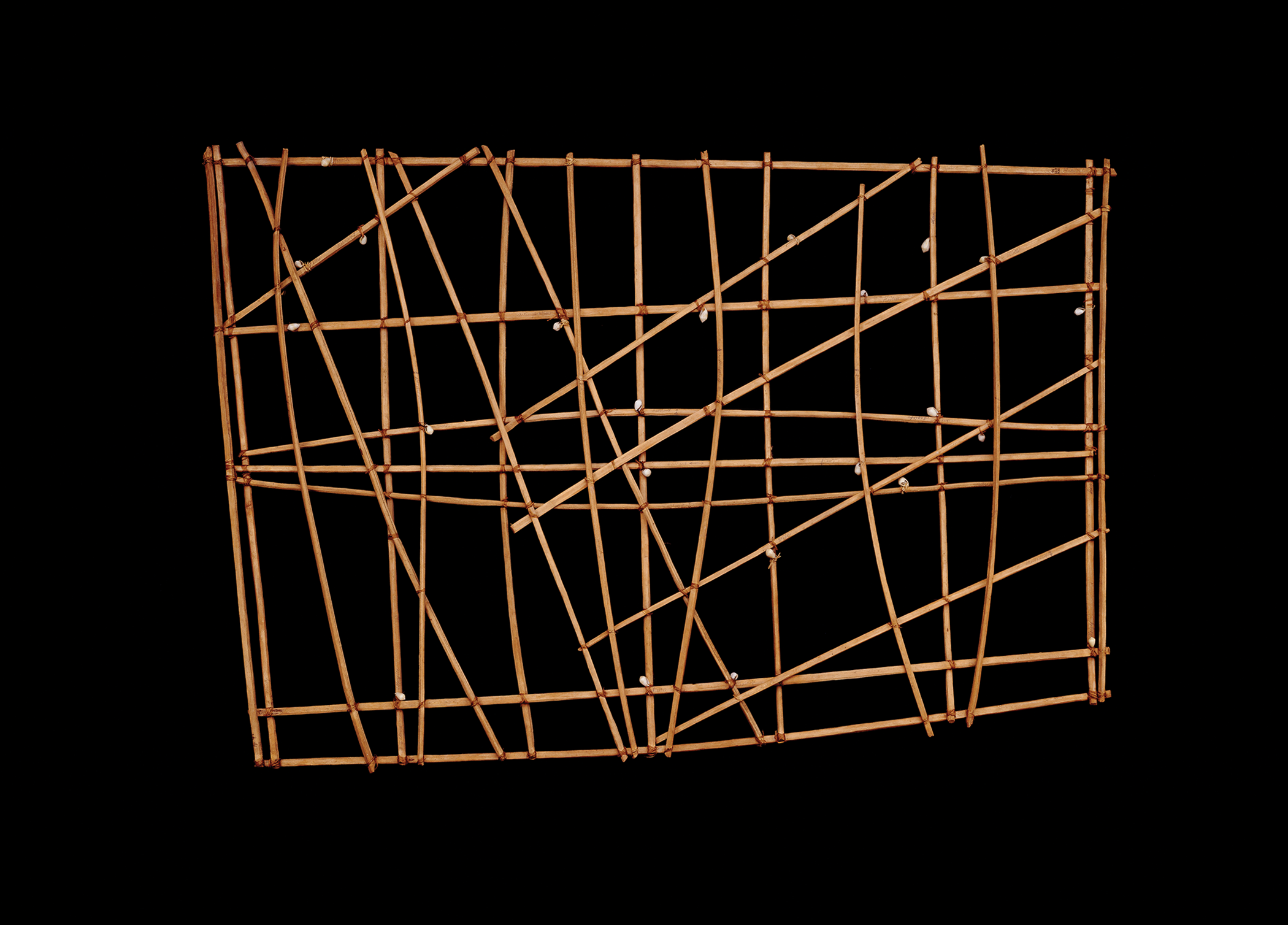
The work shown functioned as a
A memory aide to help prepare sailors for ocean voyages
B symbolic map representing the unity of a maritime kingdom
C representation of the ancestral connections between different maritime clans
D scientifically accurate map to be carried on voyages into foreign territories
A memory aide to help prepare sailors for ocean voyages
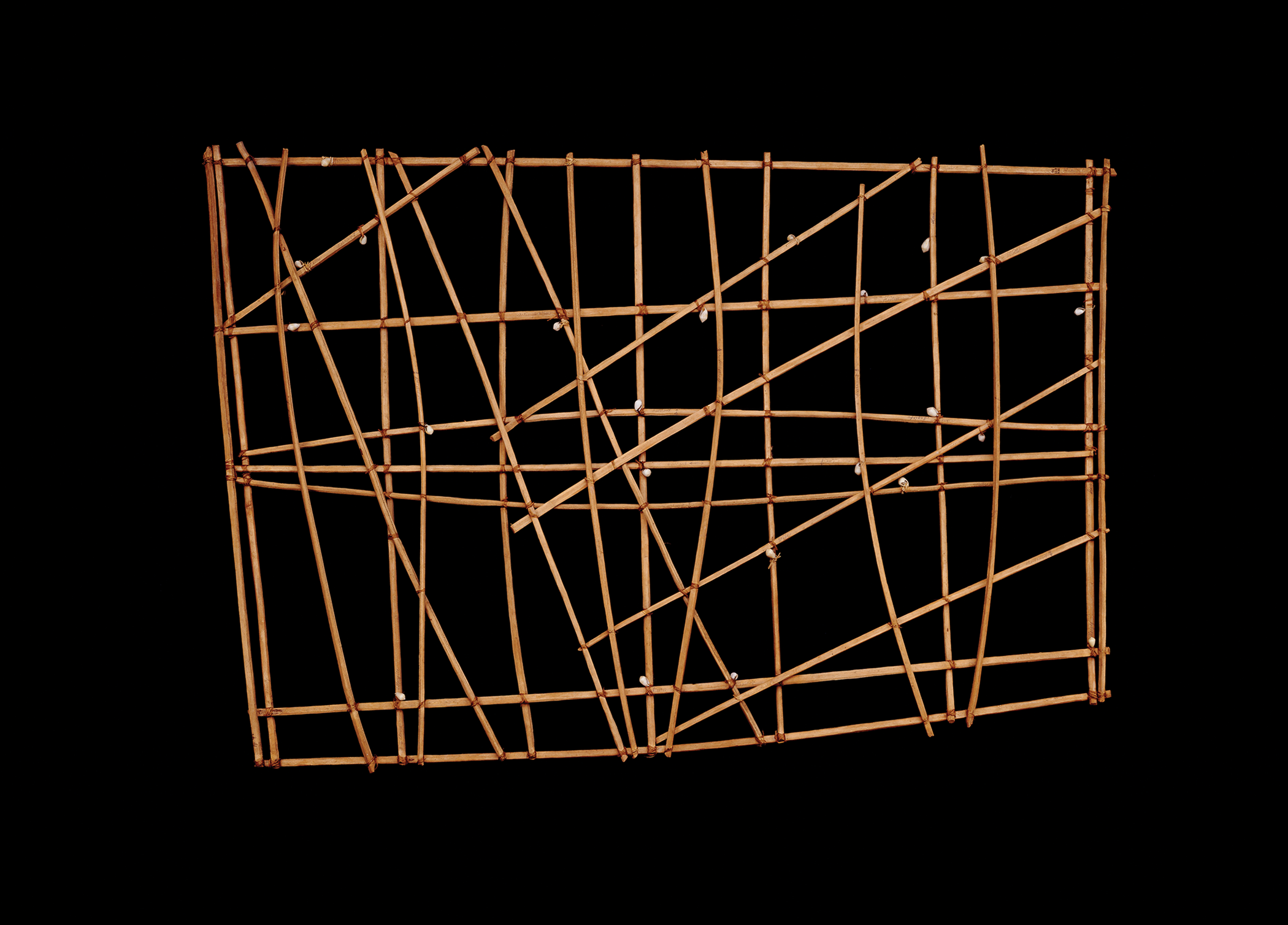
In the work shown, which of the following fabrication methods contributes to the content and resulting function of the piece?
A Interlacing horizontal and vertical sticks at regular intervals to create a strong fishing basket
B Mapping the location of inland drinking water sources through the careful placement of small cowrie shells
C Lashing together sticks with flexible fiber to allow for repositioning of lines in a decorative grid
D Placing curved sticks to represent ocean wave swells on a navigational training chart
D Placing curved sticks to represent ocean wave swells on a navigational training chart
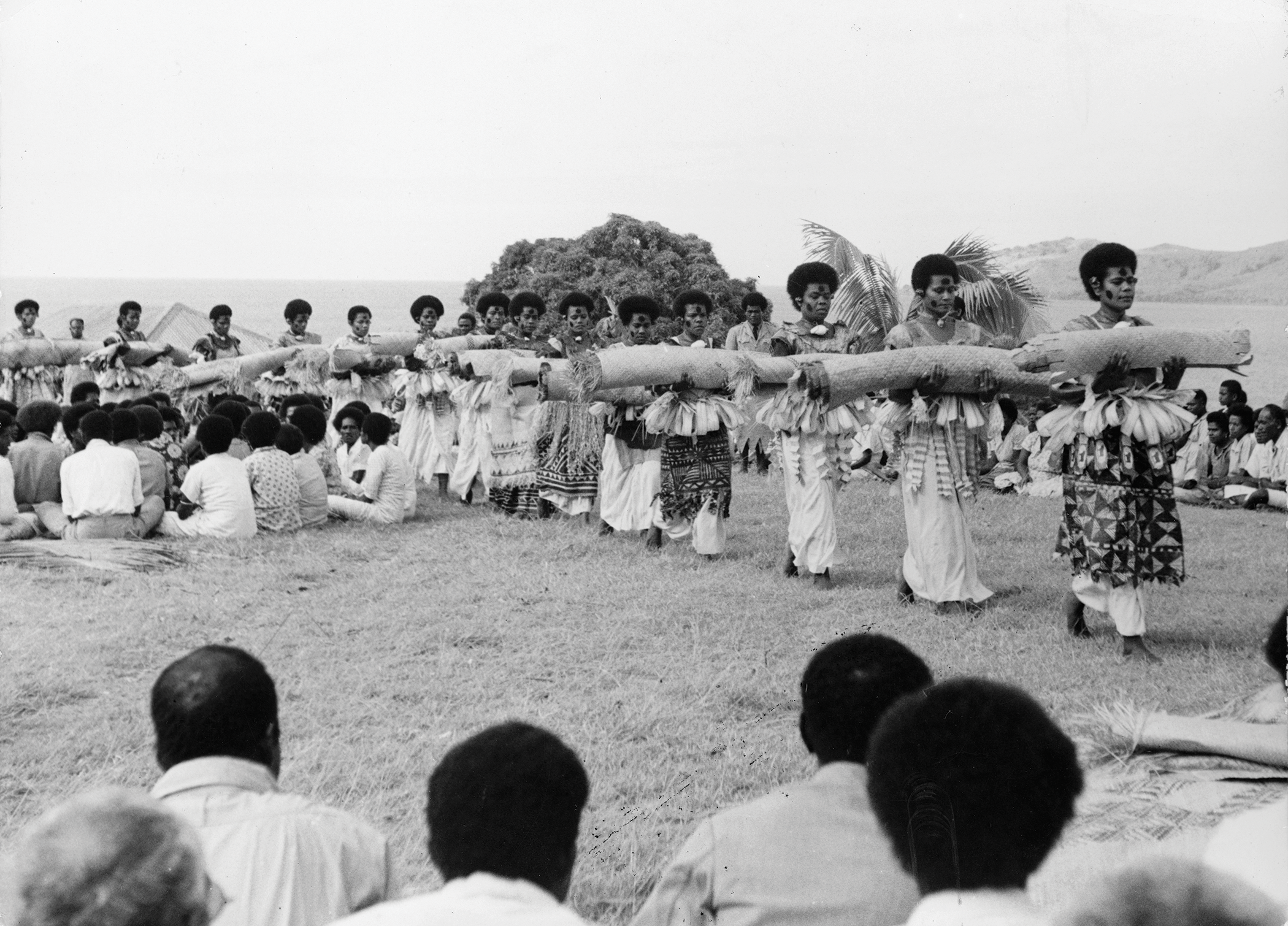
In the photograph shown, the presentation of mats commemorates
A the independent political status of the Polynesian islands
B a ceremonial encounter with a reigning monarch
C Polynesia’s debt to artistic traditions of imperial Britain
D the epic history of Polynesian migration
B a ceremonial encounter with a reigning monarch

Scholars have interpreted the object shown as representing
A a deity embodying procreative power
B a totem representing clan identity
C a founding female ancestor
D a mythic male warrior-hero
A a deity embodying procreative power
Scholars interpret the small figures carved on the staff god from Rarotonga as
A female water deities celebrated in annual new year rituals
B leaders of a new dynasty fostered by contact with nearby islanders
C male and female figures representing ideas of regeneration and fertility
D fallen warriors representing the concept of heroism and sacrifice
C male and female figures representing ideas of regeneration and fertility
In the portrait Tamati Waka Nene, the subject’s mana, or power, is displayed through the inclusion of which of the following?
A A cloak covered with kiwi feathers
B A carved staff adorned with cowrie shells
C A headdress made of woven raffia
D Tattoos depicting the subject’s ancestors
A A cloak covered with kiwi feathers
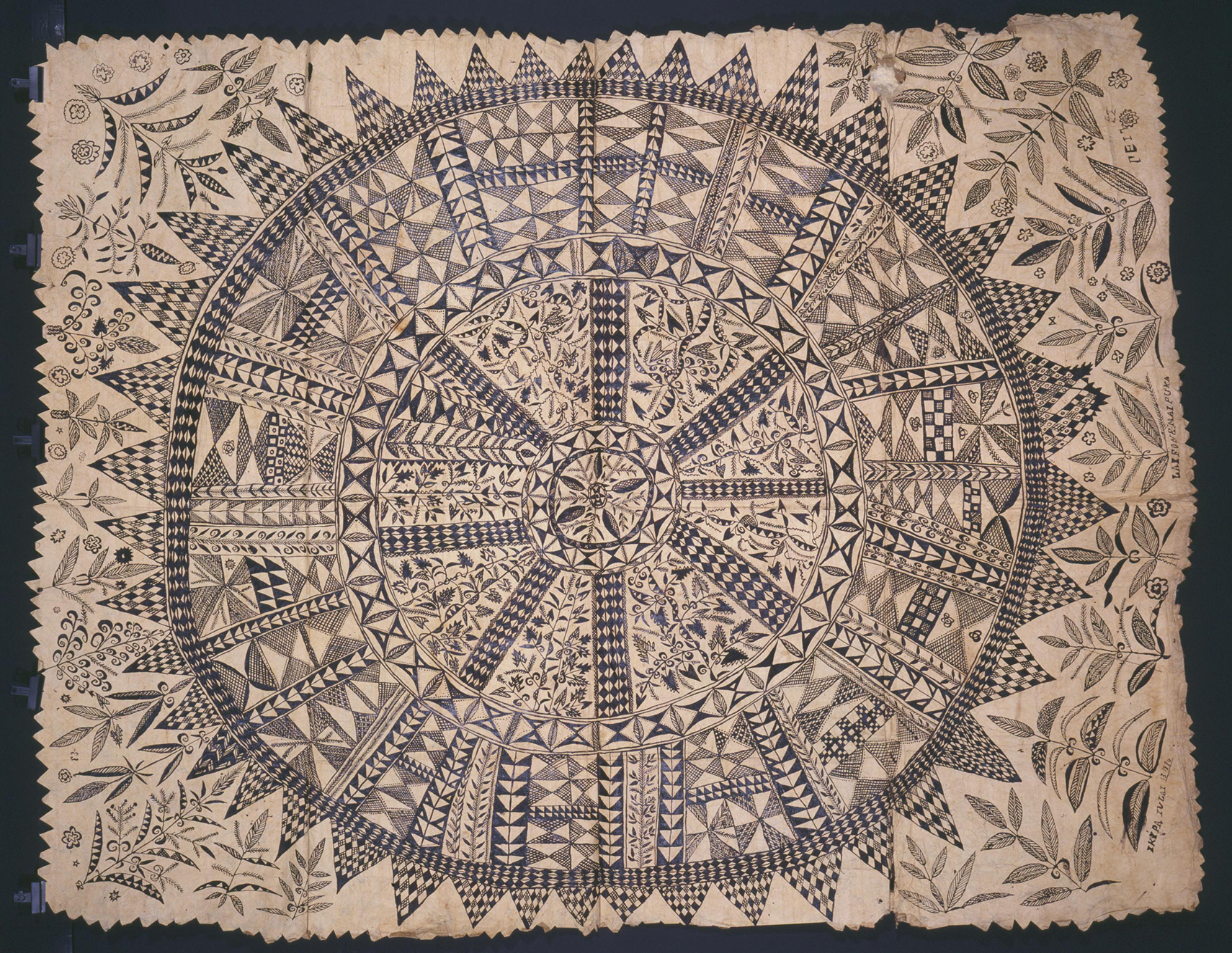
The content of the painted design in the work shown can best be described as
A abstract geometric patterns and stylized representations of plants
B a combination of sacred symbols copied from Spanish religious art
C a stylized map representing fields, settlements, and forests
D abstract representations of the accomplishments of men
A abstract geometric patterns and stylized representations of plants
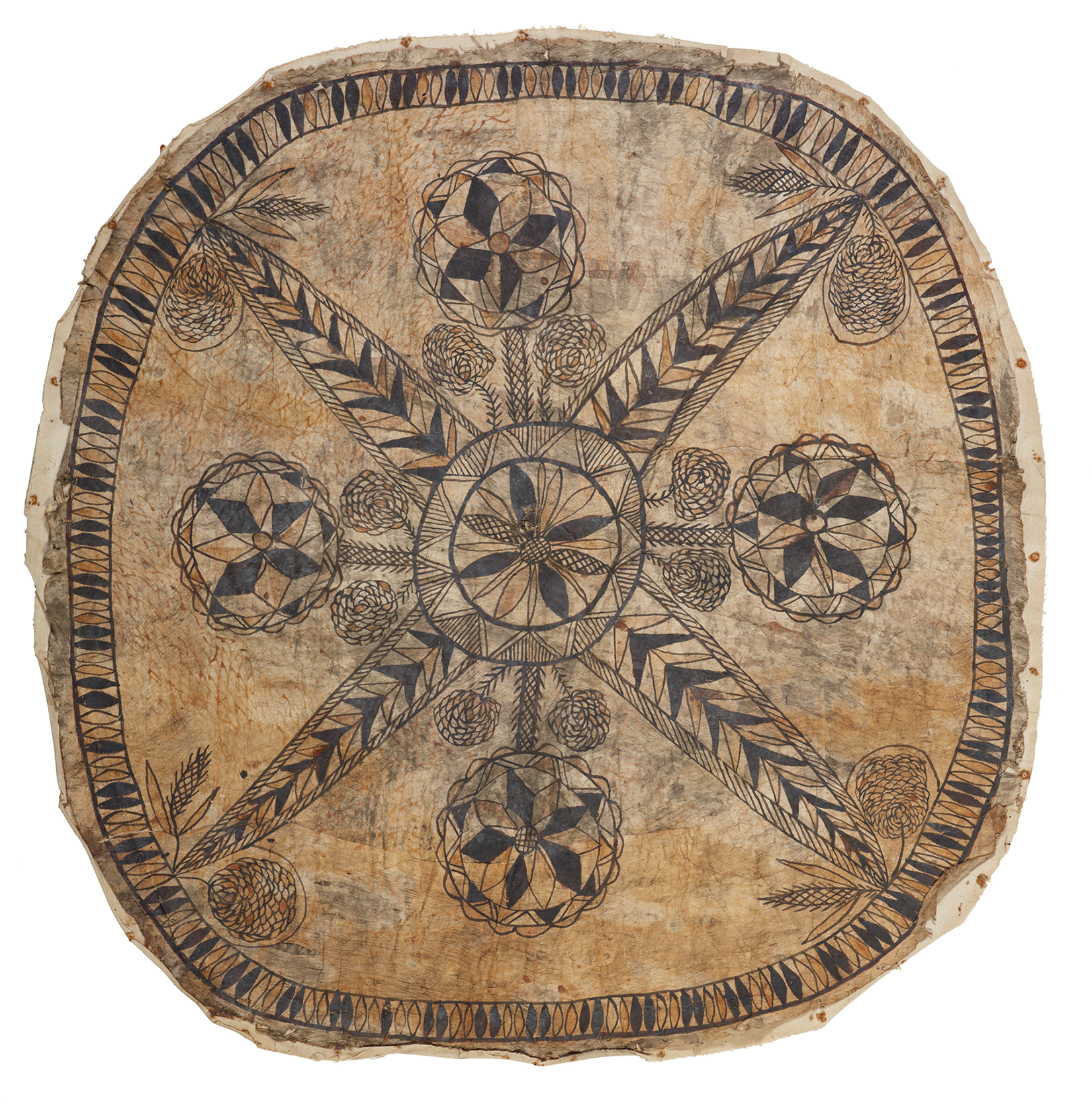
In the work shown, which of the following was used to draw attention to the surface texture of the material?
A Crosshatching and loose brushwork
B Outlined forms and large areas of negative space
C Overlapping shapes that create a background space
D Radial symmetry and repeated motifs
B Outlined forms and large areas of negative space

Staff gods from the Cook Islands, like the Rarotonga staff god shown, were wrapped in tapa, or bark cloth, because tapa was
A regarded to be a material of divine origin and therefore reserved for the clothing of deities
B considered to possess spiritual significance and was therefore appropriate for a sacred object
C used to record written magic spells, which served in the communication with the gods
D made from imported materials and was therefore considered to be very precious
B considered to possess spiritual significance and was therefore appropriate for a sacred object